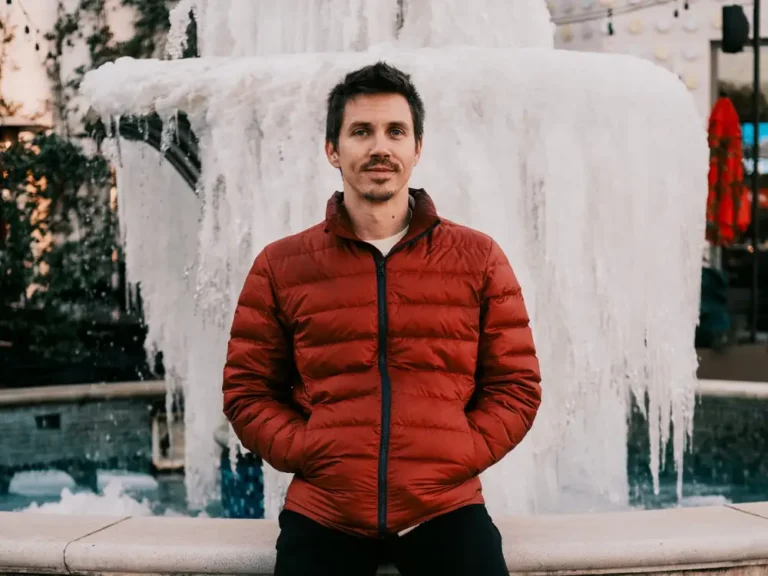California tops FEMA’s new list of areas vulnerable to weather disasters. What does it mean for the Bay Area?

‘Resilience zones’ will receive funding to prepare for flooding, fires, heat waves
Despite their name, “Community Disaster Resilience Zones” are not safe havens for residents who can withstand storms and other extreme weather. However, the Federal Emergency Management Agency, or FEMA, is spending billions in the hopes that they will be.
The agency has identified nearly 500 such “zones,” which are swaths of land that are ill-prepared to withstand flooding, earthquakes, heat waves, wildfires, landslides, and other natural hazards. As extreme weather continues to defy expectations and local records — from downpours in Death Valley to hurricanes pounding California’s coast — these areas will be prioritized for additional funding for protective improvements.
While no specific funding is promised for the new zones, projects in selected census tracts will be prioritized for annual resilience grant programs and an increased federal cost share from FEMA and other federal agencies — tapping budgets increased by President Joe Biden’s administration from $700 million to nearly $3 billion in August.
The increased pre-disaster planning, according to San Jose Mayor Matt Mahan, will help mitigate damage in vulnerable areas of the country — 500 census tracts at a time.
“Preparing for a disaster before it occurs is the best way to save lives and money in the long run,” Mahan stated in a statement. “There’s also the issue of equity.” Natural disasters disproportionately affect historically vulnerable populations, and these funds will help us protect our wonderfully diverse San Jose community.”
California led all states in FEMA’s new plan, with 51 total zones — including seven census tracts in the Bay Area — followed by Texas with 35 and Florida with 32.
Locally, these Community Disaster Resilience Zones are primarily concentrated near flood-prone waterways in Alameda and Santa Clara counties, as well as one that encompasses much of San Francisco’s Union Square and surrounding areas. Each tract scored in the 99th percentile of FEMA’s National Risk Index, outperforming approximately 84,000 other tracts across the country.
It’s no surprise that Coyote Creek in San Jose, tidelands adjacent to Fremont’s Tesla Factory, and Bay Farm Island near the city limits of Alameda, Oakland, and San Leandro are frequently featured in storm coverage headlines, most recently during a slew of high-powered January storms that soaked the state.
However, rather than relying on reactive aid requests after the damage has been done, the hope is to increase resilience proactively. Climate researchers estimated that 122 billion-dollar disasters occurred in the United States between 2016 and 2022, totaling $1 trillion in losses and 5,000 deaths. These occurrences are becoming more common.
One of the worst local disasters in recent memory struck San Jose’s tract 503122, one of the seven Bay Area disaster resilience zones. In 2017, torrential atmospheric rivers overflowed the banks of Coyote Creek, submerging over 200 people’s homes and belongings between Happy Hollow Zoo and Highway 101 north of Japantown.
Flooding caused an estimated $100 million in damage and forced 14,000 people to evacuate, hundreds of whom sued Silicon Valley’s largest water agency for $8.25 million and settled with the city of San Jose for $700,000 in compensation for personal losses.
The hope is that foundations and private companies will jump on board and help fund projects in Community Disaster Resilience Zones, which were established by a federal bill in 2022, as well as propel local governments’ own disaster-preparedness plans, which range from retrofitting vulnerable buildings and installing floodwalls to building horizontal levees and restoring native eelgrass beds.
Across the Bay, this work is well underway. Some initiatives, such as the Bay Farm Island Adaptation Project, which is led by the collaborative San Leandro Bay/Oakland-Alameda Estuary Adaptation Working Group, have already received millions from FEMA’s Pre-Disaster Mitigation grant program.
However, Danielle Mieler, the city of Alameda’s sustainability and resilience manager, hopes that these new zones will make it even easier to finance projects that address multiple community goals at once, particularly in low-income neighborhoods that have long been underinvested.
These projects “have been really forward thinking and out of the box about how this region could be transformed in the future, because we don’t just want to protect against sea level rise,” according to Mieler. “We want to make sure that we’re moving forward in a positive way — restoring habitats, protecting communities, and providing recreational access so that this is a place where everyone can continue to live and work in the long term.”
In an interview, Michael McCormick, director of the Bay Area Climate Adaptation Network (BayCAN) and president of climate change consulting firm Farallon Strategies, said he was also encouraged by these community resilience zones, which were created using newer data that wasn’t available prior to the Biden administration.
He praised this type of pre-disaster mitigation approach — even in its early stages — as a way for the federal government to help local officials solve problems creatively and holistically before the need is dire, in addition to mandates for local governments to include adaptation in their general plans since 2015.
“There are so many more communities in the Bay Area that should have a higher priority,” McCormick said. “We understand FEMA can’t just throw money at everyone all at once.” “What I see FEMA trying to do here is push resources faster, more efficiently, and creatively — it’s really refreshing to see.” Obviously, every community would like to be included on that list, but it’s a good starting point.”
He believes that resiliency work can help FEMA and the Bay Area get ahead now and avoid footing an even larger bill later, especially as the rate of billion-dollar disasters rises and private insurers pull out of risky areas.
“You don’t want to be in an urgent recovery mode — when people don’t have access to their homes, buildings, or businesses — and try to do something creative,” McCormick explained. “If we change the way we do things, we can make so much more progress on community resilience in such a short period of time.” We simply do not have the resources in our communities to deal with the year-after-year disasters.”





